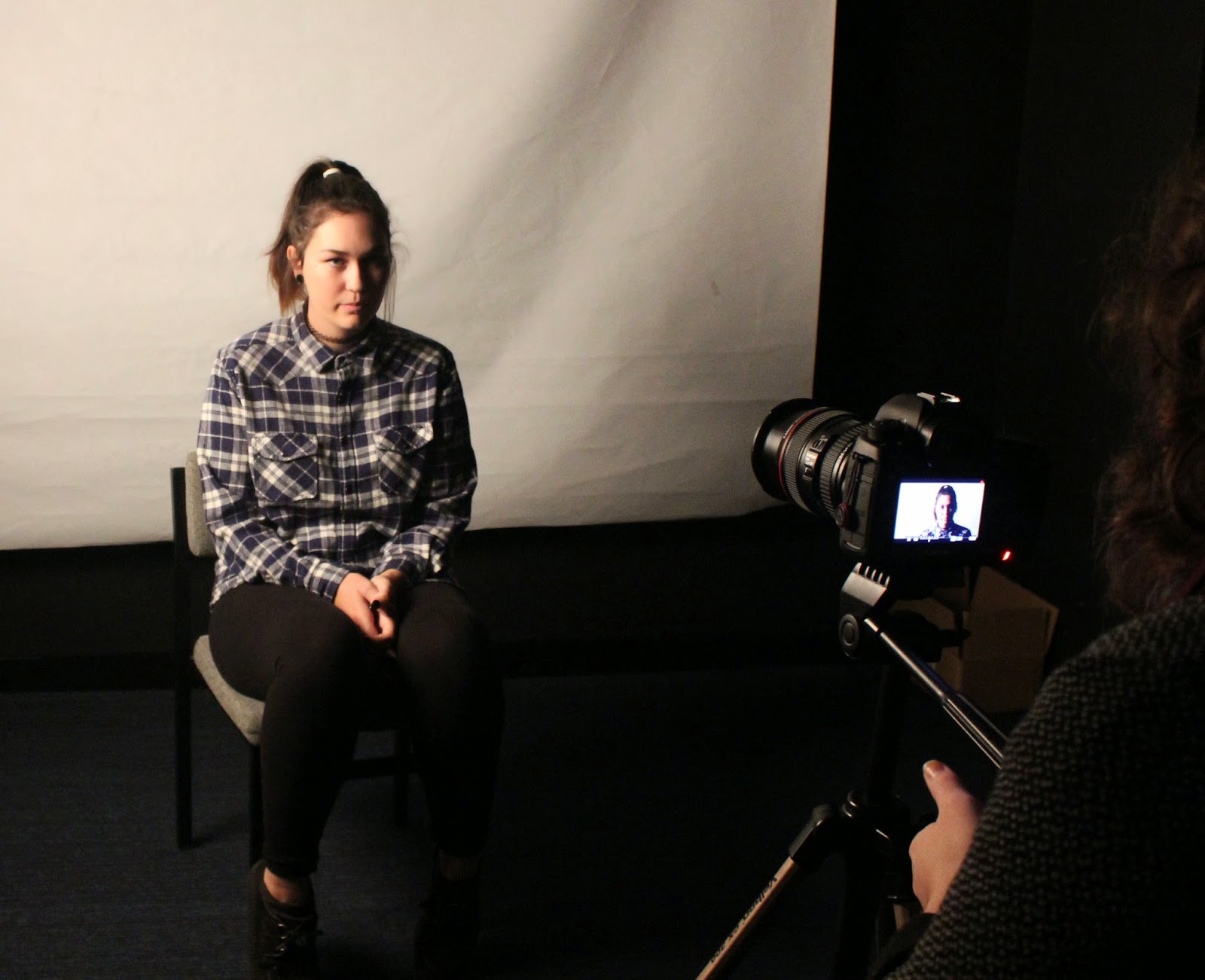As a group we practiced lighting techniques. We tested rembrandt, butterfly and edge lighting. After setting up the studio and lights, we each filmed short clips of the lighting technique in action. Each technique connotes different era's, moods and emotions. They are achieved by setting up the studio lights and subject in different ways.
- Rembrandt lighting is a lighting technique that is used in studio portraiture photography. It can be achieved using one light and a reflector (fill light). It is popular because it can create images with considered lighting by using a minimum of equipment. Rembrandt lighting is characterised by an illuminated triangle under the eye of the subject, on the less illuminated side of the face. It is named after the Dutch painter Rembrandt, who often used this type of lighting.
- The umbrella light is the key source of light, positioned at a 45 degree point in regards to the subject, and angled at a 45 degree angle pointing at the subject. The height is around a foot and a half above the subjects head. The subject is not looking or body pointing into/at the camera. The single light source is sometimes counter balanced with a reflector, placed approximately 45 degrees offset to the shadowed side of the face. This reduces contrast and begins to light the image softly rather than hard.

- This technique takes the key light up much higher than the subject and is pointing downwards onto them to cast a butterfly type shadow on their face. It is thought to project more glamorous and complimentary connotations. This was used on film stars around the 1950's and 1960's.
- The light is positioned directly in front of the subject. The key light is placed about 2-3 foot higher than the subjects head behind the camera, angled at a 70/80 degree angle, so the light beams down onto the subject. The subject is looking straight towards the direction of the camera, with their body positioned straight into the lens. The camera is directly in front of them.
- Edge lighting is slightly more dramatic than Rembrandt lighting, and hugely more so than Butterfly. It defines and seperates one side of the face from the other more obviously. The highlights are lighter and the low lights darker, therefore the contrast is higher.
- The key light is parallel to the subject at 90 degrees, positioned at the same height as the subjects eyes. The subject looks 25 degrees to the side of the camera, so the light source will only capture half of the face. A fill light can be added in the form of a reflector. Wherever the reflector is placed will dictate the strength of the contrast.

No comments:
Post a Comment